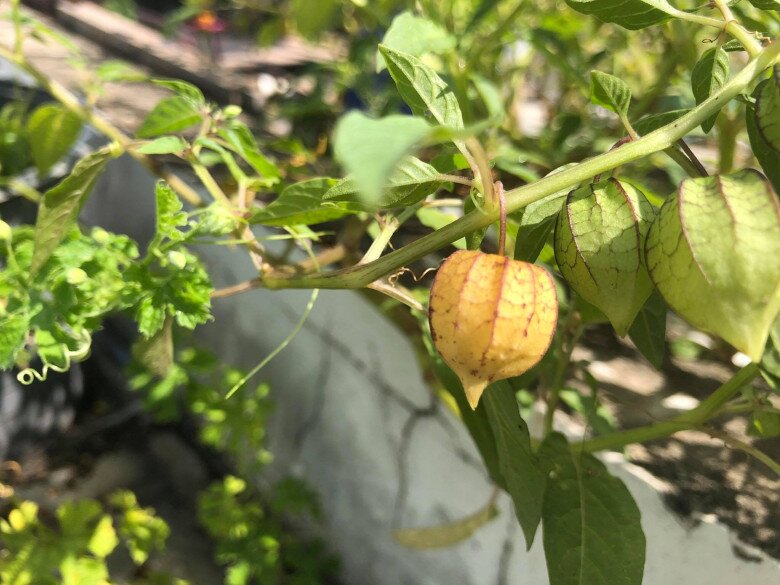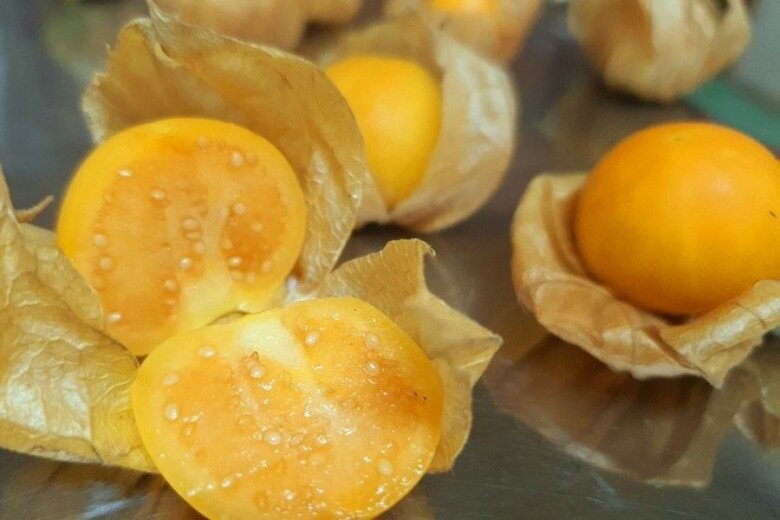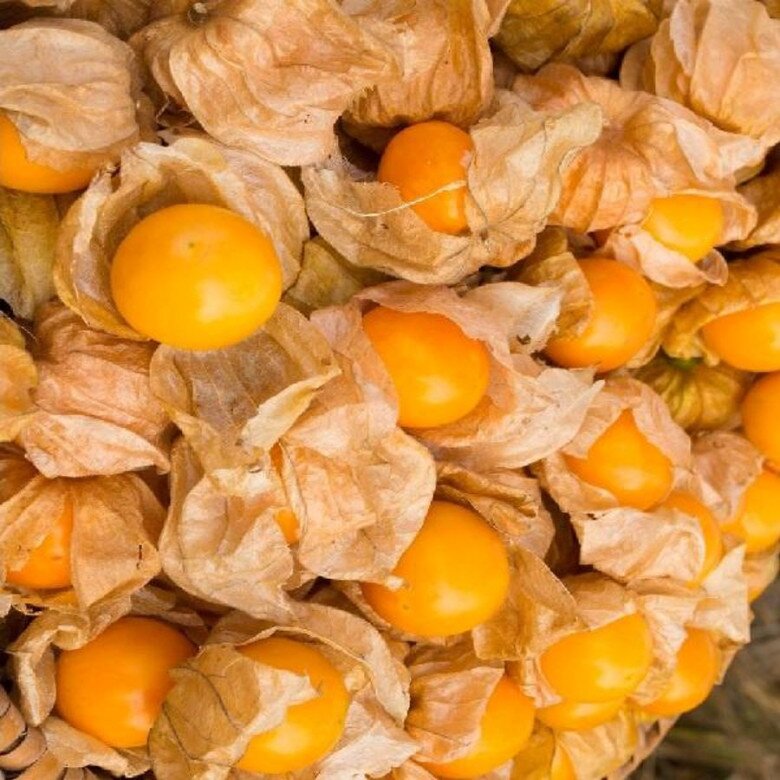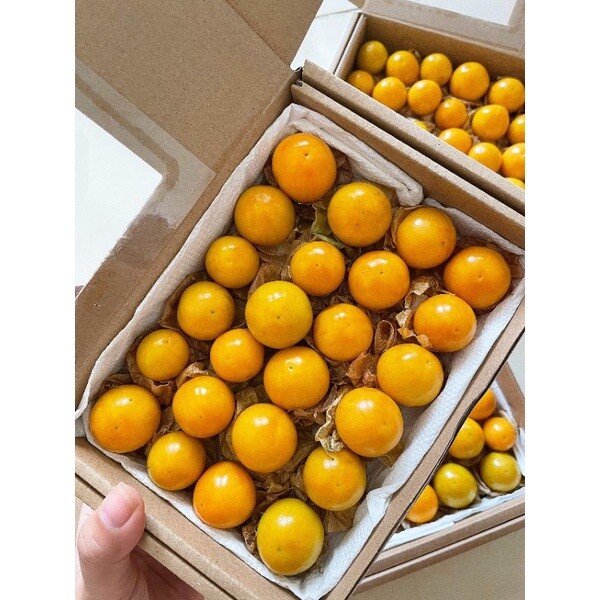
The golden berry, or Physalis, is undoubtedly a nostalgic fruit for many, evoking childhood memories.
In Vietnam, golden berries are intertwined with childhood recollections: summer afternoons spent running along rice fields, plucking ripe, golden fruits for a tangy-sweet snack. This humble fruit, with its slight tartness and refreshing flavor, captures the essence of carefree youth. In contrast, in South America—the birthplace of Physalis peruviana—this fruit is cultivated with precision, using organic methods and selective breeding. The result? Plump, vibrant orange berries with a sweet, fruity aroma reminiscent of strawberries, apples, and grapes. These premium berries are exported as delicacies to Europe, Japan, and the United States.

South American golden berries are larger, juicier, and more vibrant.
Nutritional Value: Beyond a Simple Snack
Nutritional studies highlight the golden berry’s impressive profile:
Vitamin A: Significantly higher than cherries or blueberries, promoting eye and skin health.
Vitamin C: Boosts immunity and acts as a powerful antioxidant.
Vitamin B3 (Niacin): Supports energy metabolism and nervous system function.
Minerals (iron, calcium, phosphorus): Strengthen bones, joints, and support maternal health during pregnancy.
Antioxidants: Protect the liver, kidneys, and combat aging.
In traditional Vietnamese medicine, wild golden berries (Physalis angulata) are valued for their cooling properties, treating sore throats, coughs, and skin infections. Both ancient wisdom and modern science recognize this tiny fruit’s health benefits.

While rural communities enjoy golden berries fresh or in soups, gourmet kitchens transform them into culinary masterpieces: Fresh snacks: A low-calorie, healthy treat. Dessert garnishes: The fruit’s lantern-like husk adds elegance to wedding cakes, mousses, and tarts. Salads and yogurt: Halved berries paired with greens, cheese, olives, or Greek yogurt. Jams and smoothies: Crafted into preserves or blended with mangoes and bananas. Detox drinks: Mixed with citrus and mint for a vitamin-rich, visually stunning beverage.
In South America, golden berry wine—a light, fruity vintage—is a cherished tradition during celebrations.
Commercial Value: From Wild to Luxury
In Vietnam: Wild golden berries grow abundantly in fields, rarely sold in markets. When available, a bunch of young leaves costs mere pennies.
Abroad: In Japan, a 100g tray sells for 338 yen (~$2.50), or ~$25/kg. In Europe, prices range from $8–12/kg, and imported berries in Vietnam can reach $10–12/kg.
Found in supermarkets and sought by chefs, golden berries are prized for their flavor and aesthetic appeal, gracing upscale menus worldwide.

The golden berry’s journey inspires: with selective breeding, organic farming, creative processing, and strategic marketing, even wild plants can become luxury products.
If purslane graces 5-star menus and pennywort fuels trendy detox drinks, why not elevate Vietnam’s golden berries to iconic status? The potential lies in recognizing and investing in this roadside treasure.






























